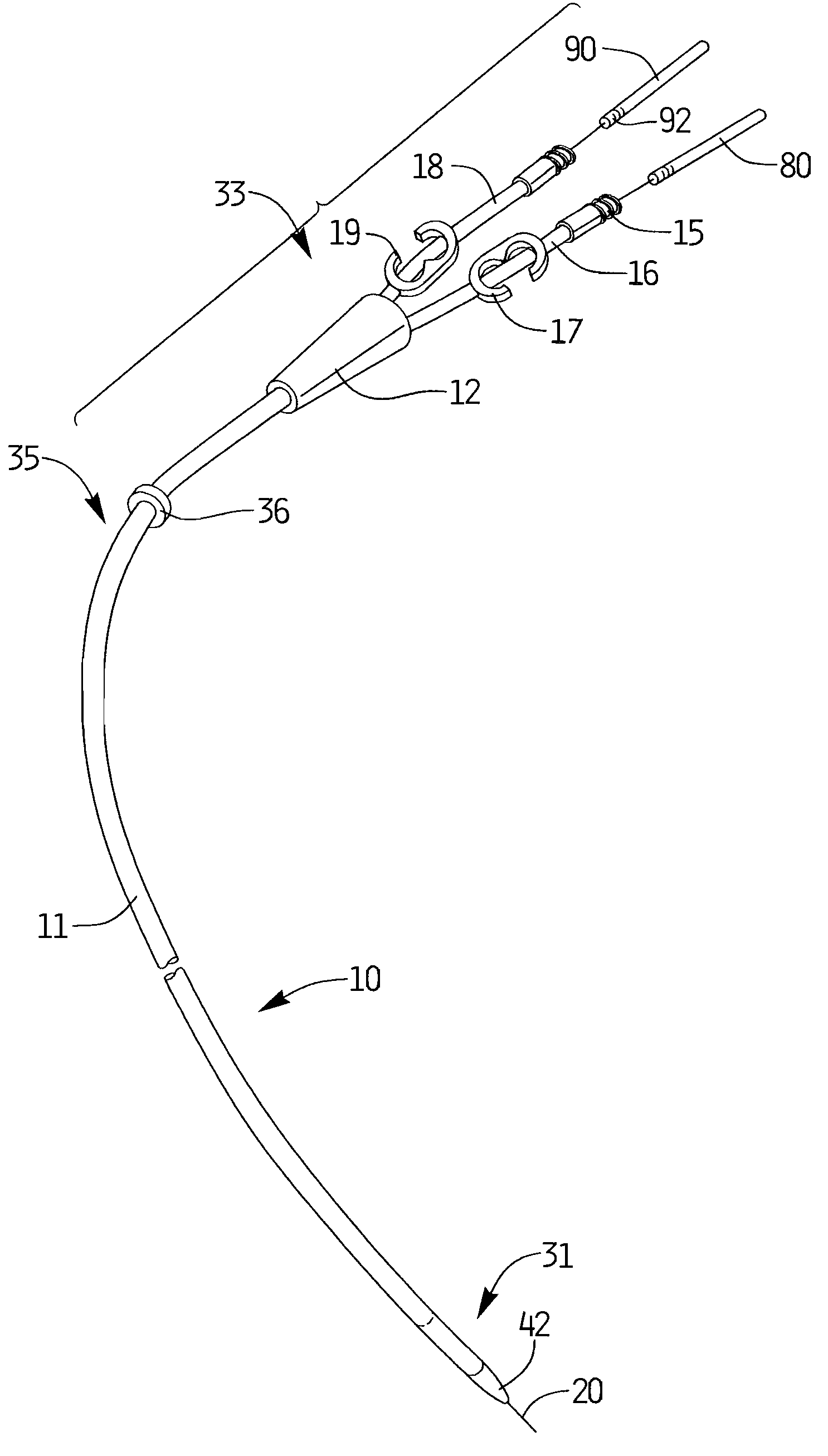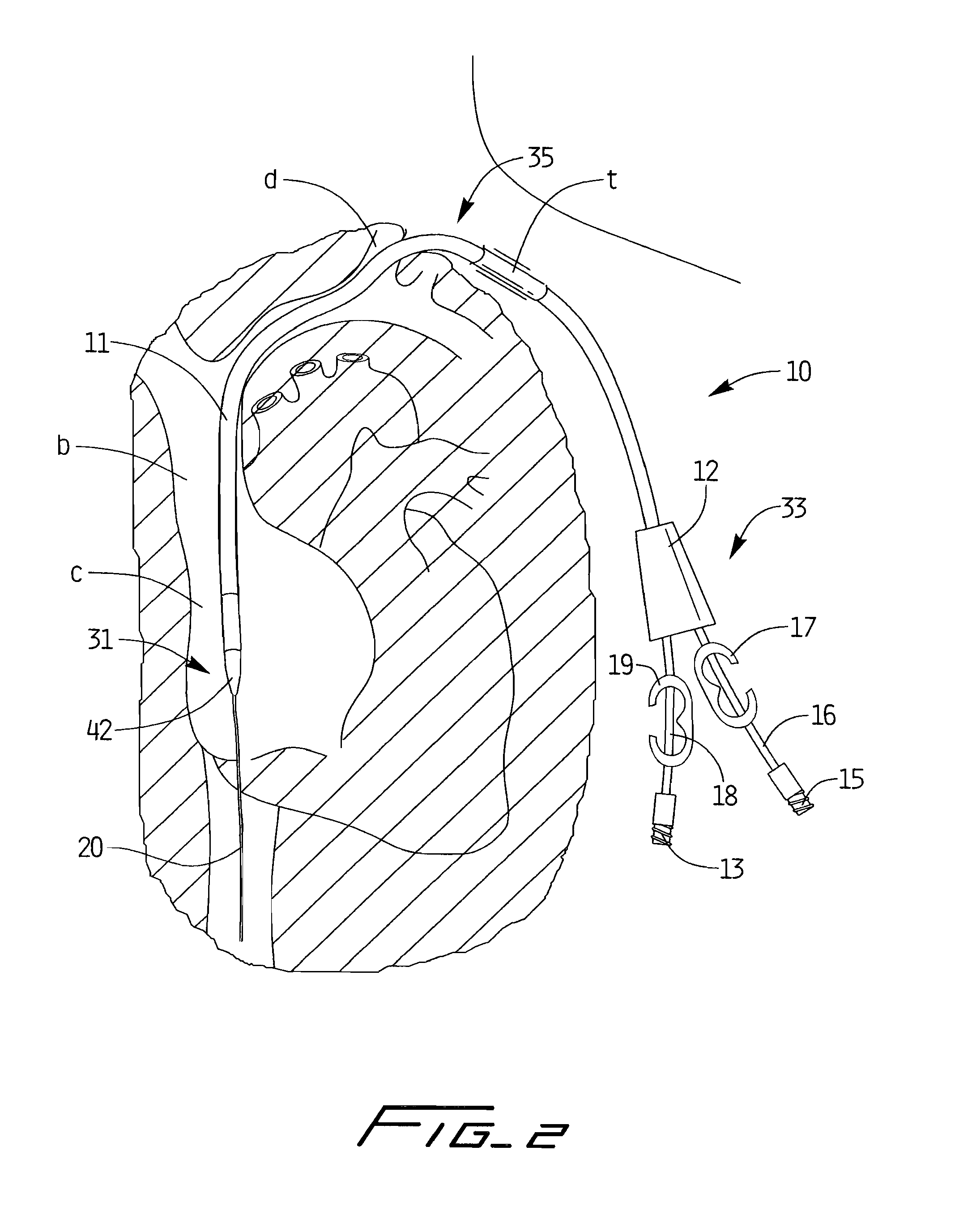Dialysis Catheter
a dialysis catheter and catheter technology, applied in the field of dialysis catheters, can solve the problems of increasing the overall cost of the catheter system, time-consuming and labor-intensive surgical procedures, and complicating the surgical procedure, so as to facilitate the insertion and increase the stiffness of the catheter
- Summary
- Abstract
- Description
- Claims
- Application Information
AI Technical Summary
Problems solved by technology
Method used
Image
Examples
first embodiment
[0145]Referring now in detail to the drawings where like reference numerals identify similar or like components throughout the several views, the catheter of the present invention is designated generally by reference numeral 10. The catheter 10 is typically inserted into an area of high velocity blood flow to ensure sufficient blood can be transported from the body for dialysis. FIG. 1 illustrates the catheter 10 inserted through the right internal jugular vein “a”, into the superior vena cava “b”, and into the right atrium “c”; FIG. 2 illustrates the catheter 10 inserted into the left internal jugular vein “d”, into the superior vena cava “b” and into the right atrium “c”. Insertion into the right atrium, from either the right or left side provides the necessary high blood flow to the dialysis machine. Note that the catheter body (catheter tube) 11 is sufficiently flexible to enable it to bend to accommodate the anatomical curves as shown.
[0146]Catheter 10 has a catheter body or ca...
third embodiment
[0160]To facilitate insertion, the catheter is configured to receive a stiffening member in the form of a stiffening rod which stretches the catheter to reduce its profile to aid in over the wire insertion and better navigate through small vessels. That is, the stiffening rod is inserted into central lumen 40 of catheter 10 and torqued to stiffen the flexible catheter for ease in over the wire insertion and navigation through the small vessels, and to reduce the outer diameter of the catheter body by stretching it during insertion. After placement of the catheter 10, the stiffening rod is removed, allowing the catheter to return to its higher profile position with the lumens of the necessary size for blood transport to and from the body. Two embodiments of the stiffening rods are illustrated in FIGS. 4A and 4B and are shown prior to insertion into the catheter 10 in FIG. 3. the stiffening rod is illustrated in FIG. 49.
[0161]Turning to the first embodiment of the stiffening rod illus...
PUM
 Login to View More
Login to View More Abstract
Description
Claims
Application Information
 Login to View More
Login to View More - R&D
- Intellectual Property
- Life Sciences
- Materials
- Tech Scout
- Unparalleled Data Quality
- Higher Quality Content
- 60% Fewer Hallucinations
Browse by: Latest US Patents, China's latest patents, Technical Efficacy Thesaurus, Application Domain, Technology Topic, Popular Technical Reports.
© 2025 PatSnap. All rights reserved.Legal|Privacy policy|Modern Slavery Act Transparency Statement|Sitemap|About US| Contact US: help@patsnap.com



